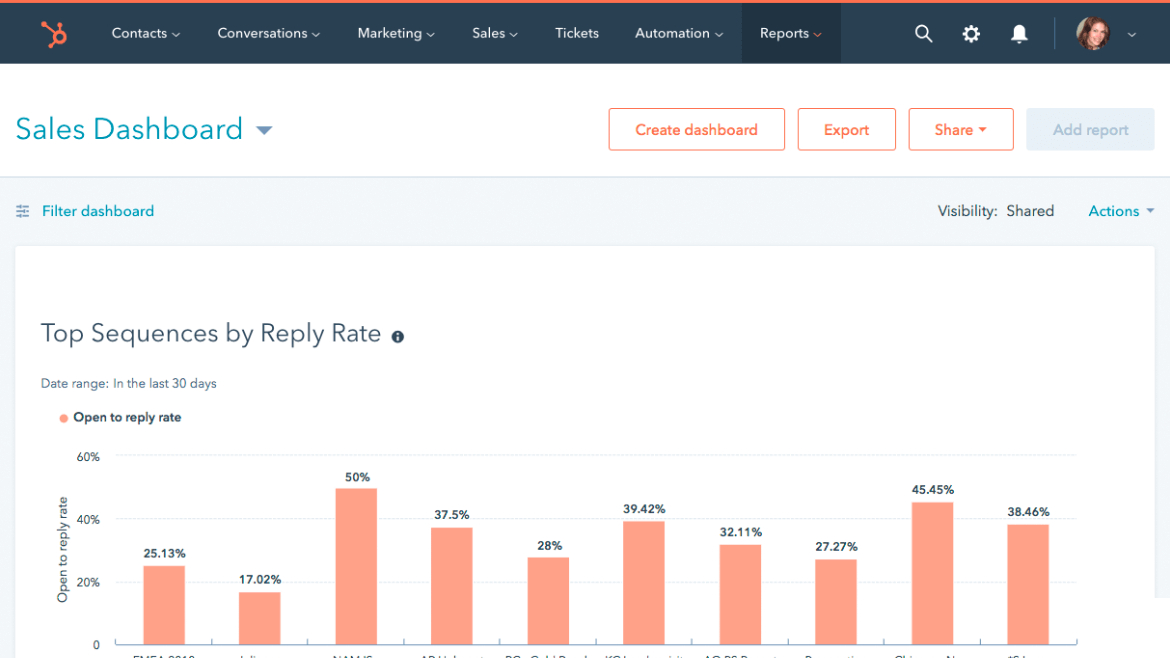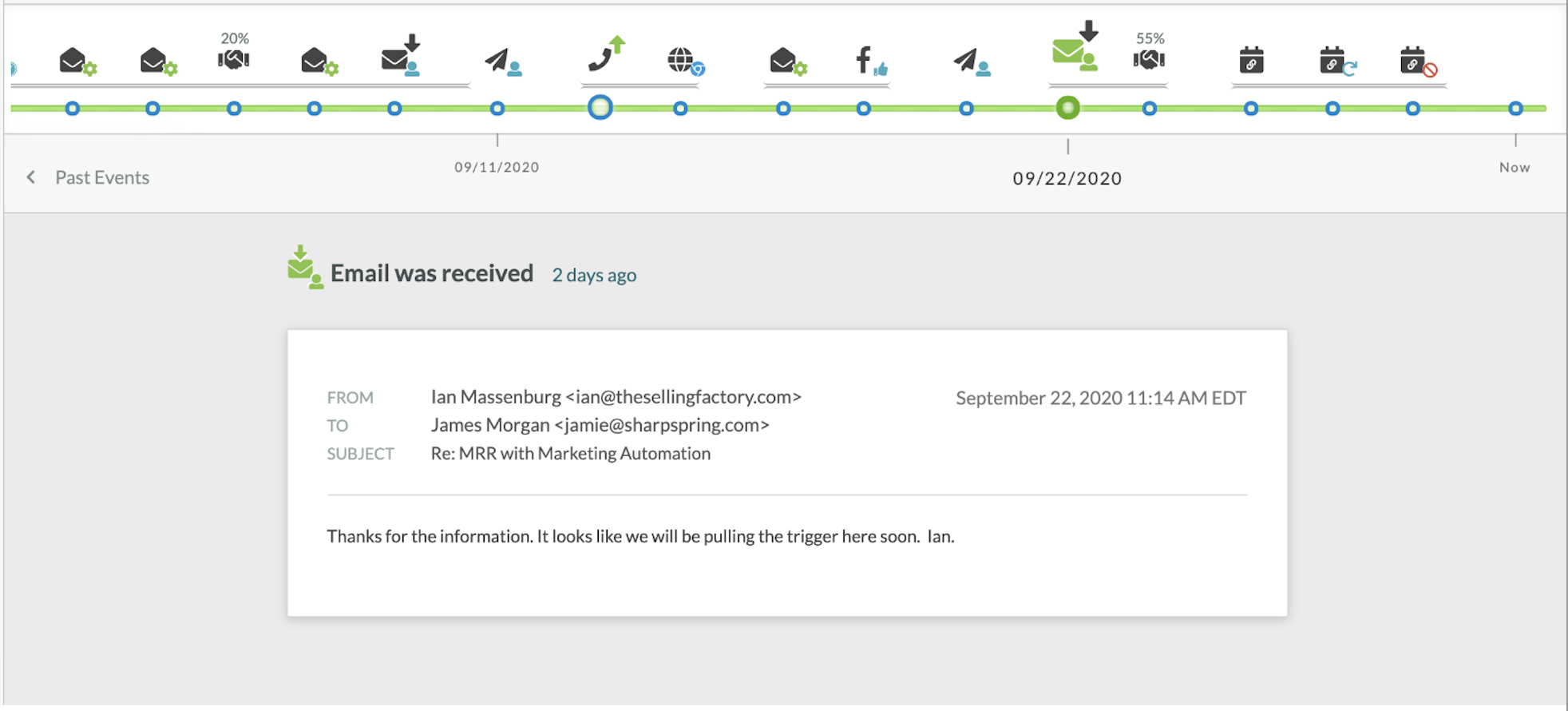How To Build a Sales Enablement Plan
Conducting and managing sales can be a daunting task for many startups and small to midsize businesses (SMBs). Most business leaders who want to expand their business plan hire a sales staff member or team.
It is equally important to have a solid sales enablement plan to ensure successful results for your sales team and improve your business' overall sales performance. Using insights from Gartner's Startup Lift: Building Your First Sales Enablement Plan [1], this article will dive into the key components of a sales enablement plan and how you can use them to design your own strategy.
What is sales enablement?
Sales enablement is the process of providing your sales team with all the necessary resources that they need to sell your products or services effectively. Required resources may include sales tools that help sales managers and company staff improve customer communication.
A sales enablement plan can involve discussions around organizational framework, required training, and educational activities to push your sales team to excel.
An organized sales enablement plan helps small and midsize businesses define a clear sales system to achieve their organizational goals without pressuring the staff to achieve targets on their own. Having a straightforward sales plan saves you and your team significant time and effort, while replicable resources allow you to rely on, analyze, and tweak your processes to foster future wins.

A sample dashboard in sales enablement tool HubSpot Sales Hub
4 key components of a successful sales enablement plan
You can implement the following key components sequentially to build an effective sales enablement plan.
1. Sales processes
Creating a defined sales process for every organizational target is essential simply because the past success of top sales representatives doesn't guarantee their future efficiency with your company. This is primarily because every product and service differs, and brands’ needs vary consistently. Hence, even seasoned sales veterans will need a systematic process they can use to engage buyers effectively.
Your sales process should include three elements: a focus on proven results, buyer alignment, and defined capabilities and roles.
Focus on proven sales results
Just because you’re formalizing your sales processes doesn’t mean you have to reinvent the wheel. Documenting former achievements can give your team a solid foundation for future success.
However, if you are in the process of introducing a new product or service to the market, you might not yet have any sales best practices. In that case, you can analyze and emulate elements of your competitor’s strategy, especially if they have a similar offering and target market.
Ensure alignment with buyer's perspective
The buyer’s perspective should be the cornerstone of your sales processes because they are positioned on the other side of the transaction. Regardless of how extensive your research is, it’s best to allow some wiggle room so you can adjust to the buyer’s needs.
For example, imagine a situation where you have designed a process with five different steps through the sales funnel. However, the sales rep tries a direct approach during their first contact with a prospect, and the buyer agrees to commit then and there. If a similar situation crops up with another rep, you may want to create an alternate sales process that bypasses one or more phases of your funnel.
Identify sales capabilities and define the role
By identifying sales capabilities, you pinpoint the skills and abilities sales professionals need to convert prospects to paying customers. While specific capabilities may differ for each company and product, here are some common skills that most sales teams need to succeed:
Product knowledge, including all features and benefits of your offering
Negotiation skills to enable mutually beneficial closing deals
Strategic thinking to bridge the gap between company goals and planned sales strategies
A deep understanding of the what, how, and why of your sales process
2. Enablement content
Each new sales hire needs sales enablement content that aligns with business processes and training, which can help them comfortably settle into the process. For many SMBs, enablement content may include sales scripts and training materials.
Many companies also find product demos and case studies helpful because they make your offerings more valuable and tangible for buyers. You may also want to add brochures, spec sheets, or whitepapers to educate your sales staff regarding product strengths and give prospects an in-depth analysis of the product benefits.
3. Sales training
Creating a sales enablement plan involves documenting and conveying the key sales activities you expect your sales team to perform. This step educates your sales team on the sales process and mitigates doubt and trepidation, setting them up for success.
When documenting your sales enablement plan, consider these important questions:
How can we discover and qualify opportunities?
How can we confirm a prospect's need for our solution?
How should we deliver product demonstrations?
How can we resolve objections and close deals?
A sales enablement plan made while considering and answering the above questions will double as an onboarding manual for each new sales hire. It’s important to have a detailed plan to prevent sales associates from freestyling their approach to the point where it doesn’t align with your brand’s strategy.
Gartner's research highlights four core elements of a successful sales training system:
How to spot deals
Spotting deals involves identifying potential sales opportunities using data analysis and understanding buyer needs. You should train your sales team to spot opportunities based on what each buyer needs, not just the benefits of your offering.
According to Gartner, here are some questions salespeople can ask to identify deals:
Question | Related tip |
|---|---|
Does your product solve a problem that directly impacts the prospect's bottom line or revenue? | For instance, if the prospect is leaking money month after month because they need a more efficient or sustainable solution, does your product or service stop that leak? |
How much money will your offering save or earn for the prospect? | While it may be impossible to quantify exactly how much you’d be saving the customer, you establish a ballpark figure to compare deals against each other. After that, you can invest time, energy, and resources toward the most lucrative deals. |
What is your competitive advantage for this customer—price, quality, or service? | In most situations, you can beat your competition when it comes to price, quality, or quality of service. If you can make an offering beyond the standard service that your market offers, you may end up pitching a better deal for the buyer. |
How to confirm a real opportunity
Confirming real opportunities requires asking the right questions at the right time. An ideal sales plan should identify the first questions sales reps should ask and how to pose them.
You can base questions on the needs of likely prospects and how your value proposition addresses them. It is important to teach each salesperson how to disqualify or postpone potential deals that may not solve a critical problem for the prospect.
For example, suppose your software company develops solutions for manufacturers. One of your most lucrative products is an assembly line management system that optimizes production rates without sacrificing quality. If a prospect currently outsources much of its manufacturing to overseas providers, it may not need an in-house solution.
In the meantime, your sales rep can steer them toward another product, such as a supply chain management solution, which they could use to realize immediate ROI.
How to identify buyers
Your sales enablement plan plays a crucial role in helping your sales team identify and establish a champion within the customer organization and reach out to other decision-makers. Your sales team must be equipped with the right resources and tools to effectively influence the buyer's decision, such as competitive battle cards or scoping templates. Also, you may want to provide your team members with client references using lead generation software if they are yet to interface with new prospects.
In addition, your sales enablement plan should help your sales team analyze the buyer’s perspective and determine when high-cost sales investments, such as customized demos and proofs of concept (POCs), are necessary to close the deal.

An event in the lead management lifecycle in lead generation tool Lead Gen & CRM
How to build consensus and close
Your sales enablement plan should include your sales teams’ training on effectively building consensus with the buyer and addressing any objections they may have. Consensus creation tools can be a useful resource in this process as they help sales professionals focus on the key stakeholders and their priorities.
Your sales enablement plan should also prepare your sales team for the final push of closing the deal. The plan should include lessons regarding the skills and tools needed to leverage sales resources and negotiate with prospects.
It is important to anticipate and prepare for potential risks and surprises, such as last-minute price negotiations that may occur during this stage. By coaching and supporting your sales staff through these challenges, you will earn their confidence and make it easier for them to seal deals.
4. Resources and timeline
Deciding on your resources and timeline involve two core elements, both of which work together to empower your staff to accelerate the sales process:
Plan your co-selling activity carefully
The enablement plan should include co-selling activities, such as product demonstrations, proofs of concept, and proposal writing. To ensure continuity between these activities and your higher-level goals, link them to elements of the sales process.
Develop your timeline and define outcomes
Your enablement plan should outline specific behaviors and provide ample training time to ensure that each salesperson is ready to use them. It’s best to set up time boundaries and benchmarks while ensuring required flexibility. This will make it easier for your staff to navigate your processes while also eliminating confusion.
To balance the workload, you can delegate aspects of the training to colleagues. For instance, you may have a technical support person demonstrate product features or have your financial controller teach your reps about proposal templates.
However, the core training and onboarding responsibility should fall on the tech CEO.
Avoid these common mistakes when creating and managing your sales enablement plan
Here are some common pitfalls that could make an otherwise strong sales enablement plan go belly-up:
Neglecting to update outdated sales material. It's crucial to monitor the usability of old, outdated content. If you fail to update outdated sales collateral, it may contain irrelevant information, leading your sales reps to lose potential deals.
Disorganized and unavailable sales content. Organizing and making sales content easily accessible is crucial, especially when reps need information quickly.
Choosing ineffective sales enablement tools. Some tools lack essential features, have poor functionality, or have an counterintuitive user interface. You’ll want to provide your reps access to content, training materials, and software integrations to ensure desired results.
No software buy-in from sales reps. New processes and clunky tools can be overwhelming for reps using existing methods. They need to realize how software can make their jobs easier and relieve some of the pressure they may feel as they work toward broader goals.
The right software can ensure sales enablement plan success
Start exploring sales enablement tools, inside sales software, or CRM software today, or connect with an advisor for customized software recommendations based on your team's unique needs and goals.
Sources
Note: The screenshots of applications included in this article are examples to show a feature in context and are not intended as endorsements or recommendations.